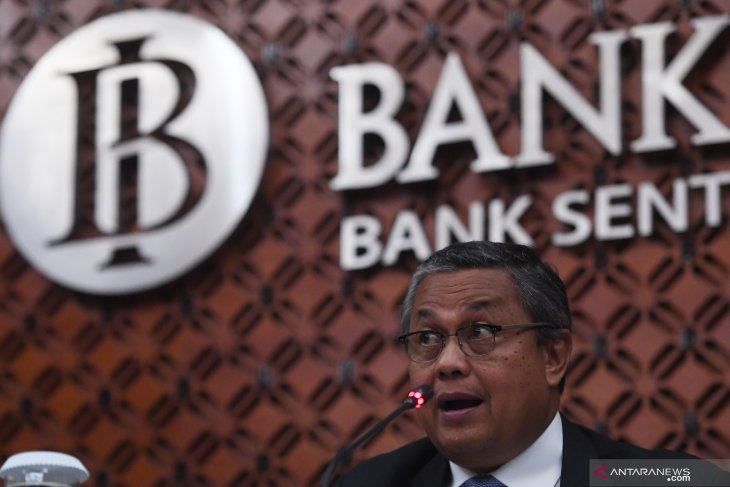Indonesia’s central bank has decided to cut its benchmark interest rate by 25 basis points to 4.25 percent after keeping it at 4.5 percent for the past three months, taking advantage of the country’s lowest inflation in almost two decades.
Bank Indonesia (BI) Governor Perry Warjiyo said the board of governors’ meeting on June 17-18 decided the rate cut to provide a much-needed boost for economic recovery amid the Covid-19 pandemic.
“This decision is consistent with the effort to stabilize the national economy and to push the success of the National Economic Recovery [PEN] program,” Perry said at a teleconference on Thursday, referring to the government $49 billion stimulus program.
The central bank also lowered its overnight deposit facility and lending facility by 25 bps to 3.5 percent and 5 percent, respectively.
The move came after Indonesia Indonesia posted a 2.19 percent inflation in May, its lowest inflation in almost two decades, due to low demands caused by the restriction on economic and social activities during the Covid-19 pandemic.
Perry added the possibility to further lower interest rates remains open by considering several factors.
“BI continues to see the possibility to [further] lower interest rate [by looking at] low inflation, maintained external stability including low current account deficit and the need to support economic growth further,” he explained.
Finance Minister Sri Mulyani Indrawati said earlier that the government now projected the largest Economy in Southeast Asia to shrink by 3.1 percent in the second quarter. The government hoped for a recovery in the third and fourth quarters, enabling Indonesia to end the year with a 1-percent growth.
Improving Economy
BI projected Indonesia’s gross domestic product (GDP) growth to be between 0.9 percent to 1.9 percent in 2020 but expected to see 5 percent to 6 percent growth the next year.
“[The growth] would be supported by improving global economy as well as policies on stimulus,” Perry said.
In the nearer future, the central bank’s governor said he saw a recovery in the third quarter as economic activities picked up pace in line with relaxation on large-scale social restriction (PSBB) that has been taking place since the start of June.
Foreign capital inflow has also returned to the domestic market. BI recorded $7.3 billion inflow to the country’s bond and the stock market from April 1 to June 15.
Foreign exchange reserves in May reached $130.5 billion, equivalent to 8.3 months of imports or eight months of imports plus payment of the government’s foreign debts. Perry noted the amount to exceed the international adequacy standard at three months of imports.
The current account deficit would narrow to 1.5 percent of the GDP, far below the previous outlook at 2.5 percent to 3 percent of the GDP, Perry said.
Rupiah Remains Undervalued
As a result of steady inflow to the domestic market, the rupiah continues to strengthen. As of June 17, it has been appreciated by 3.75 percent point-to-point, or 5.69 percent average compared to May.
However, compared to the level by the end of 2019, the currency is still depreciated by 1.42 percent.
Perry said the rupiah is still undervalued and has the potential to strengthen and support the economic recovery.
“Strengthening potential is backed by low inflation, lower current account deficit, competitive asset returns in the domestic market, and Indonesia’s risk premium that has been and will continue to be lowering,” Perry said.

